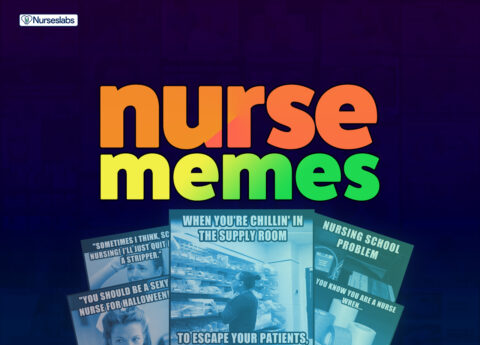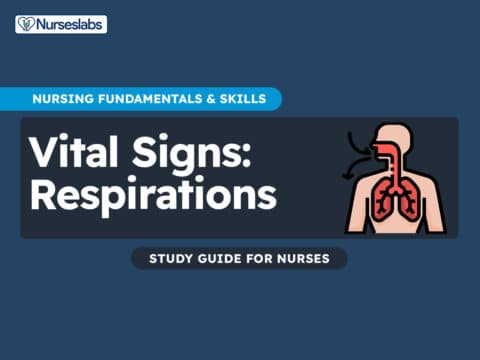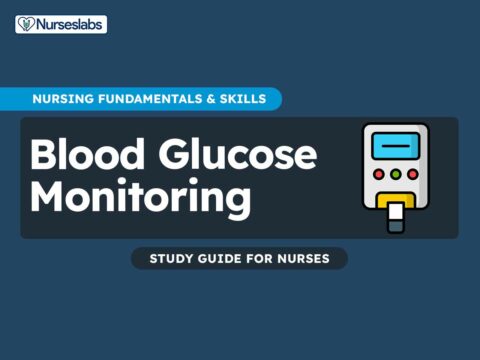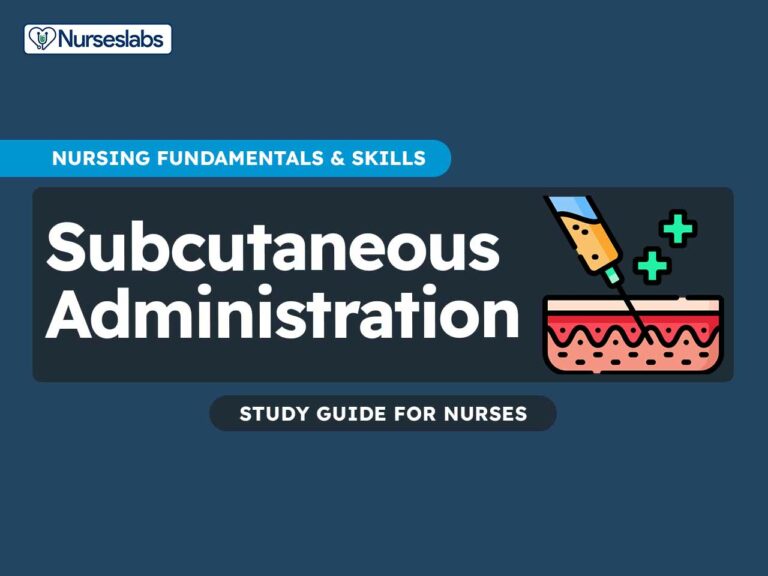The nursing bag has been an essential tool for public and community health nurses since the early 20th century. It is designed to help prevent the spread of infections and ensure that nurses can provide safe and effective care to patients in various settings especially during home or community visits. This technique involves the systematic organization and use of a nursing bag containing essential medical supplies and equipment required for patient care.
What is Bag Technique in Nursing?
The bag technique is a tool by which the nurse, during the visit, will be able to perform a nursing procedure with ease and agility, to save time and effort to render effective nursing care to clients. It is a systematic approach used by nurses, particularly those working in home health care and community settings, to prevent the spread of infections and ensure the safe, efficient delivery of care. It involves the careful organization, use, and maintenance of a nursing bag that contains all the necessary medical supplies and equipment needed for patient care.
The public health bag also known as a nursing bag or home visit bag is an essential and indispensable equipment used by public health nurses and other healthcare professionals during home visits and community health interventions. The bag contains essential medical supplies, equipment, and documentation materials necessary to provide comprehensive and efficient care in various community settings. It plays a crucial role in infection control, ensuring that nurses can deliver safe and effective care while minimizing the risk of cross-contamination.
Exceptional graduates from Memorial Hospital Training School in Richmond, VI, received a nursing bag and uniform upon graduation (Training School Notes, 1905). The bag soon became synonymous with the district nurses’ identity, as noted by C. Keith in 1905: “They become acquainted with the nurse, recognize her visage, and identify her by the bag she bears.”
Principles of Bag Technique
The bag technique in nursing is guided by several fundamental principles designed to maintain cleanliness, prevent infection, and ensure efficient and safe patient care. Here are the core principles:
1. Infection Control. The primary goal of the bag technique is to minimize the risk of cross-contamination between patients and from the nurse to the patient. By following strict procedures for handling and using the contents of the nursing bag, nurses can significantly reduce the likelihood of infection transmission. The concept of effective bag technique for infection prevention, first discussed in a 1956 publication by Smendik and Kurtagh, emphasized maintaining distance between the bag and the client, utilizing newspaper as a protective barrier, and highlighting the importance of handwashing. In 1961, a public health nurse illustrated improved shigellosis control methods to families by utilizing the items from her nursing bag to demonstrate proper handwashing techniques and specimen management (Levin, 1961).
- Asepsis. Always maintain an aseptic technique to prevent contamination of the bag and its contents. Use hand hygiene protocols rigorously, including handwashing with soap and water or using alcohol-based hand sanitizers before and after patient contact.
- Barrier Protection. Use barriers such as disposable underpads or clean towels to place under the nursing bag to avoid contamination from surfaces in the patient’s environment.
- PPE Usage. Utilize personal protective equipment (PPE) as necessary to protect both the patient and nurse from potential infections.
2. Organization and Accessibility. The nursing bag is systematically organized so that all supplies are easily accessible and can be used efficiently. This organization helps nurses deliver care quickly and effectively, ensuring they have all necessary items at hand.
- Systematic Organization. Keep the contents of the bag well-organized so that items are easily accessible and can be found quickly when needed. This helps prevent unnecessary handling and potential contamination.
- Stock Management. Regularly check and replenish supplies to ensure that the nursing bag is always ready for use. Discard expired or contaminated items promptly.
3. Minimize Cross-Contamination. Minimizing cross-contamination is a critical aspect of the bag technique in nursing, particularly in home health and community care settings. Cross-contamination can lead to the spread of infections, posing a risk to both patients and healthcare providers.
- Selective Use. Only take out the supplies necessary for the procedure at hand to minimize the risk of contaminating other items in the bag.
- Single-Use. Avoid reusing disposable items. Once an item has been exposed to the patient environment, it should not be returned to the nursing bag.
- Proper Disposal. Dispose of used supplies, including PPE and waste, in designated disposal bags or containers to prevent contamination.
4. Patient and Environment Safety. In the bag technique, ensuring patient and environment safety is paramount to providing effective care while minimizing the risk of infection transmission.
- Safe Placement. Choose a clean and stable surface to place the nursing bag, away from potential contaminants and within easy reach for the nurse.
- Environmental Cleanliness. Ensure the patient’s environment is as clean as possible to reduce the risk of contamination during care activities.
5. Documentation and Monitoring. Documentation and monitoring play integral roles in the bag technique, ensuring accountability, continuity of care, and adherence to infection control protocols.
- Accurate Documentation. Keep accurate records of supplies used, procedures performed, and any changes in the patient’s condition. This helps maintain accountability and ensures continuity of care.
- Regular Monitoring. Routinely inspect the nursing bag and its contents for cleanliness and integrity. Address any signs of contamination or wear and tear immediately.
6. Education and Training. Proper instruction and ongoing learning ensure nurses have the knowledge and skills needed to perform this technique effectively and safely.
- Continuous Education. Stay updated on the latest best practices in infection control and bag technique. Engage in continuous professional development and training.
- Patient and Caregiver Education. Educate patients and their caregivers about infection control practices to maintain a clean and safe environment.
Contents of a Public Health Nurse Bag
The Manual of Public Health Nursing offered standardized lists of nursing bag supplies and guidance on recommended care and utilization of the bag for public health nurses nationwide.
- Paper lining
- Extra paper for making waste bag
- Plastic/linen lining
- Apron
- Hand towel
- Soap in a soap dish
- Thermometers (oral and rectal)
- 2 pairs of scissors (surgical and bandage)
- 2 pairs of forceps (curved and straight)
- Disposable syringes with needles (g. 23 & 25)
- Hypodermic needles (g. 19, 22, 23, 25)
- Sterile dressing
- Cotton balls
- Cord clamp
- Micropore plaster
- Tape measure
- 1 pair of sterile gloves
- Baby’s scale
- Alcohol lamp
- 2 test tubes
- Test tube holders
- Solutions of:
- Betadine
- 70% alcohol
- Zephiran solution
- Hydrogen peroxide
- Spirit of ammnonia
- Ophthalmic ointment
- Acetic acid
- Benedict’s solution
*BP apparatus and stethoscope are carried separately and are never placed in the bag.
Usages of Items in a Public Health Nurse Bag
The following are the contents of a Public Health Nurse bag and their usage.
1. Paper Lining. Provides a clean surface for organizing and preparing supplies, minimizing the risk of contamination from surfaces in the patient’s environment.
2. Extra Paper for Making Waste Bags. Enables nurses to create disposable waste bags for proper disposal of used supplies and biohazardous materials, promoting infection control and environmental safety.
3. Plastic/Linen Lining. Acts as a barrier between supplies and potentially contaminated surfaces, maintaining the cleanliness and integrity of the contents of the nurse bag.
4. Apron. Protects the nurse’s clothing from spills, splashes, and soiling during patient care activities, ensuring personal hygiene and professionalism.
5. Hand Towel. Allows nurses to dry their hands after handwashing or using hand sanitizers, promoting proper hand hygiene and reducing the risk of infection transmission.
6. Soap in a Soap Dish. Provides a means for handwashing with soap and water, a critical component of infection control and preventing the spread of pathogens.
7. Thermometers (Oral and Rectal). Essential for measuring body temperature accurately, aiding in the assessment and monitoring of patient’s health status, and detecting signs of fever or hypothermia.
8. Scissors (Surgical and Bandage). Facilitate the safe and precise cutting of medical materials such as dressings, bandages, and tapes during wound care and other procedures.
9. Forceps (Curved and Straight). Assist in handling sterile supplies and instruments safely, reducing the risk of contamination and ensuring aseptic technique during procedures.
10. Disposable Syringes with Needles. Used for administering medications, vaccines, or other injectable treatments, allowing for precise dosage delivery and minimizing the risk of needlestick injuries.
11. Hypodermic Needles. Come in various gauges to accommodate different injection sites and medication viscosities, ensuring safe and effective medication administration.
12. Sterile Dressing. Provides a sterile covering for wounds or incisions, promoting wound healing and preventing infection by protecting the area from contamination.
13. Cotton Balls. Used for wound cleaning, applying topical medications, or removing debris, providing a gentle and absorbent material for various patient care needs.
14. Cord Clamp. Essential for clamping and securing the umbilical cord after childbirth, preventing excessive bleeding, and ensuring the newborn‘s health and safety.
15. Micropore Plaster. Offers a hypoallergenic adhesive tape for securing dressings or medical devices, providing gentle adhesion without causing skin irritation.
16. Tape Measure. Allows for accurate measurements of various body parts, aiding in assessments such as growth monitoring, wound size evaluation, and proper placement of medical devices.
17. Sterile Gloves. Provide a protective barrier for the nurse’s hands during invasive procedures or when handling potentially infectious materials, reducing the risk of cross-contamination.
18. Baby’s Scale. Enables accurate measurement of infant weight, essential for monitoring growth and assessing nutritional status during well-child visits or postnatal care.
19. Alcohol Lamp. Provides a source of heat for sterilizing instruments or materials in a controlled manner, ensuring aseptic technique during minor procedures or wound care.
20. Test Tubes and Test Tube Holders. Used for collecting, transporting, and storing biological samples or specimens for laboratory testing, facilitating diagnostic assessments and treatment planning.
21. Solutions (Betadine, 70% Alcohol, Zephiran Solution, Hydrogen Peroxide, Spirit of Ammonia, Acetic Acid, Benedict’s Solution). Various solutions serve different purposes such as wound cleansing, disinfection, sterilization, or diagnostic testing, supporting comprehensive patient care and treatment protocols.
22. Ophthalmic Ointment. Used for prophylactic treatment of newborns to prevent ophthalmia neonatorum, a bacterial eye infection transmitted during childbirth, promoting newborn eye health.
Best Practices for Bag Technique
From organization and infection control to adaptability and continuous education, the following topics guide nurses in maintaining high standards of care delivery during home visits and community health interventions.
1. Comprehensive Preparation.
The bag should be stocked with all necessary articles, supplies, and equipment required to address emergency needs effectively. This ensures that the nurse is equipped to handle various situations that may arise during home visits or community health interventions. After extensive experimentation, the Nurses’ Settlement in New York (Henry Street Settlement) developed a district nurses’ bag that appears to be comprehensive (Brewster, 1901).
2. Regular Maintenance.
Both the bag and its contents should undergo frequent cleaning and maintenance. Supplies should be replaced as needed to ensure they are in optimal condition and ready for immediate use at any time. This practice promotes readiness and preparedness for emergent situations.
3. Prevention of Contamination.
The bag and its contents must be safeguarded from contact with any potentially contaminated articles in the patient’s home. This prevents cross-contamination and maintains the integrity of the supplies, ensuring their effectiveness in providing safe and hygienic care.
4. Differentiation of Clean and Contaminated Items.
Nurses should perceive the bag and its contents as clean and sterile, contrasting them with articles belonging to the patients, which are considered dirty and contaminated. This distinction helps maintain infection control standards and prevents the spread of pathogens.
5. Efficient Organization.
The arrangement of the bag’s contents should be tailored to the user’s preferences and needs. An organized layout enhances efficiency during patient care activities, minimizing the risk of confusion and streamlining the delivery of care.
6. Patient-Centered Approach.
Tailor the contents of the bag to meet the specific needs of the patient population being served. Consider factors such as age, medical condition, and cultural preferences when selecting supplies and equipment.
7. Documentation and Accountability.
Maintain accurate documentation of the supplies used during each patient encounter. Document any procedures performed, medications administered, and changes in the patient’s condition to ensure continuity of care and accountability.
8. Adaptability and Preparedness.
Be prepared to adapt the contents of the bag based on the unique requirements of different patient care settings and situations. Anticipate potential emergencies and ensure that the bag is equipped to address emergent needs effectively. Since the early 1900s, the nursing bag has served as an essential tool for visiting nurses in the United States, coinciding with the establishment of public health nursing as a professional field. Nurses at the Visiting Nurse Association of Chicago meticulously prepared their bags prior to embarking on a day of home visits, customizing the contents based on the nature of the visits. For instance, if a maternity client was scheduled for a visit, oakum pads for use as sanitary pads were among the supplies included in the bag (Moore, 1900).
9. Communication and Collaboration.
Foster open communication and collaboration with other members of the healthcare team. Share information about the contents of the bag and coordinate care delivery to ensure seamless and comprehensive patient care.
10. Continuous Education and Training.
Stay updated on best practices, guidelines, and advancements in nursing practice related to the bag technique. Participate in ongoing education and training opportunities to enhance proficiency and maintain competence in patient care delivery. Over time, the contents of nursing bags underwent continuous evolution. The advent of disposable items prompted public health nurses (PHNs) at the Allegheny County Health Department in Pennsylvania to discard the “bulky, heavy, old bag” in favor of a modernized alternative. Nevertheless, it was acknowledged that periodic reassessment by the nursing bag committee would be necessary to ensure its ongoing effectiveness and adaptation to evolving service responsibilities (Everett, 1965).
Steps in Performing Bag Technique
In 1970, UCOM Educational Inc. in Rochester, NY, released a self-instructional unit titled “Nurse’s Bag Technique.” This resource aimed to facilitate the learning of proper bag technique among public health nurses (PHNs) and student nurses, emphasizing principles of asepsis and familiarity with essential equipment found in the nurse’s bag (Sullivan & Weber, 1970). The following are steps in performing the bag technique and the rationale for each action:
1. Upon arrival at the patient’s home, place the bag on a table lined with clean paper, ensuring the clean side is facing out and the folder part touches the table.
Placing the bag on a clean surface prevents contamination and maintains the integrity of the supplies within the bag.
2. Request a basin of water or a glass of drinking water if tap water is not available.
Access to clean water facilitates proper hand hygiene, a crucial step in infection prevention during patient care.
3. Open the bag, take out the towel and soap, and wash hands using soap and water. Dry hands thoroughly.
Handwashing removes pathogens from the hands, reducing the risk of transmitting infections to the patient or contaminating supplies. The Home Care National Patient Safety Goal 7, as outlined by The Joint Commission in 2007, advocates for minimizing the risk of healthcare-associated infections in homecare settings and adhering to the current hand hygiene guidelines provided by the CDC. The nursing bag has historically been advocated as a resource for promoting regular handwashing practices.
4. Put on the apron with the clean side facing outward, protecting the nurse’s uniform.
Wearing an apron prevents soiling of the nurse’s clothing and minimizes the risk of contamination during care delivery.
5. Lay out all necessary articles needed for the specific care task, ensuring they are readily accessible.
Having supplies readily available streamlines care delivery and reduces the need for unnecessary movement during the procedure.
6. Close the bag and place it in a designated corner of the working area to prevent contamination.
Proper bag management minimizes the risk of contamination and maintains the cleanliness of the supplies within the bag.
7. Proceed with performing the necessary nursing care treatment according to the patient’s needs.
Providing appropriate care promotes patient comfort, security, and recovery while addressing health needs effectively.
8. After providing treatment, clean all used items and perform handwashing to prevent infection transmission.
Cleaning used items and practicing hand hygiene reduces the risk of cross-contamination and ensures the safety of both the caregiver and patient.
9. Open the bag and return all used items to their proper places after cleaning them. Close the bag securely.
Organizing the bag and closing it securely maintains the cleanliness and organization of supplies for future use.
10. Remove the apron, folding it with the soiled side in and the clean side out. Place it in the bag for disposal.
Proper disposal of the apron prevents contamination and maintains cleanliness in the patient’s environment.
11. Document all necessary data, observations, care rendered, and instructions for patient care in the record. Provide education and instructions for patient care in the nurse’s absence.
Documentation ensures continuity of care and facilitates communication among healthcare providers, while patient education promotes self-care and adherence to treatment plans.
12. Make an appointment for the next visit, whether at home or the clinic, noting the date and time.
Scheduling follow-up appointments ensures ongoing monitoring and continuity of care for the patient’s health needs.
References and Sources
- Pamela Aaltonen; Elizabeth (Libby) Richards; Kay Webster; Lynn Davis (2009). Use of the Public Health Nursing Bag in the Academic Setting. , 26(1), 88–94. doi:10.1111/j.1525-1446.2008.00757.x





































Leave a Comment